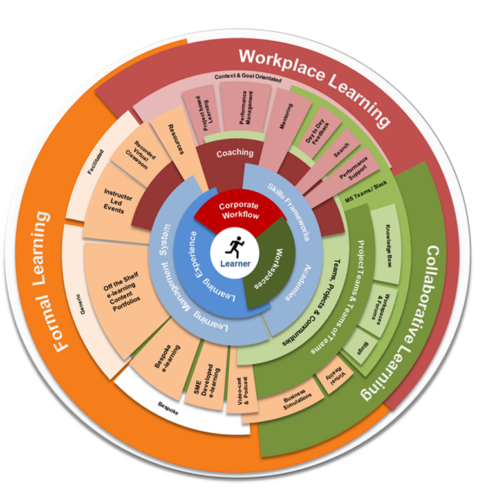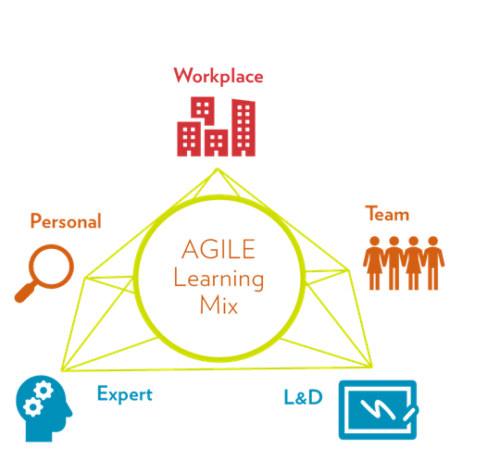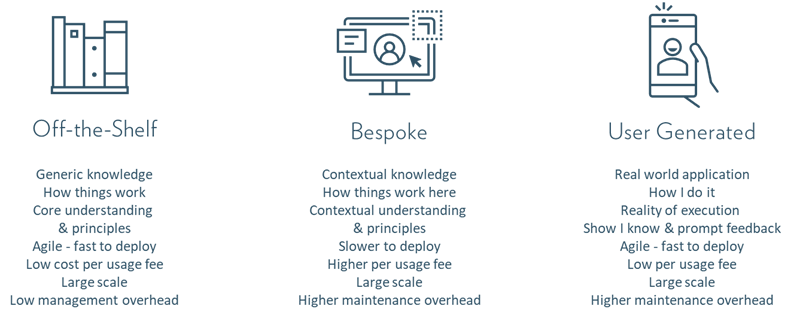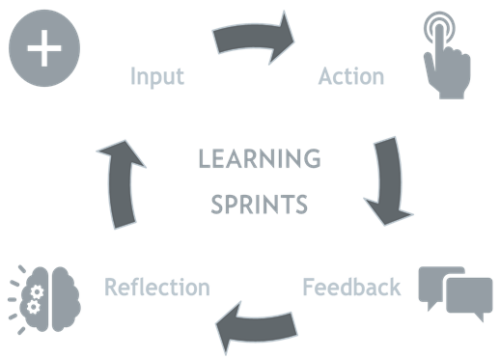Building an Effective Content Creation Strategy – Part 2
In part one of this two-part article on building an effective content creation strategy we explored the drivers for a learning content strategy and how and where content can support operational performance. Here we look beyond the content and consider which tools and approaches will ensure learning forms a part of the overall employee experience. We also look at who in the organization can energize the learning experience and how connecting people around learning can make it more impactful.
Connect with where and how people learn!
Having an effective learning content strategy is more than just thinking about formal learning delivery. It’s also about using the workplace and collaborative working as channels and sources of learning content. Because learning content should fit learning experiences that are not only managed by learning systems but are also part of the employee experience in the workplace and the places where they work.

© Fosway Group
So, as we think about learning content strategy, we need to think about the tools we provide, and the content management controls and maintenance we put into place which support formal learning delivery from our training and learning teams. We need to consider the tools the learning team has to generate their own content or adapt relevant materials into training resources to help learners to keep pace with the speed and the scale of change.
We also need to think about how we support workers themselves in work and provide them with the tools that can support learning just in time, but also provide them with the tools for rich feedback, search, and the tools that enable them to create their own learning content, so that they can share their knowledge, techniques and skills.
Often digital learning defaults to being about personal, lone study. That needs to change.
Connect with who is energizing learning

© Fosway Group
This is how we bring content from L&D and experts and the team together that generates the most effective learning. And it’s the combination of content curation, content creation, and where we take the learner to learn that dictates how deeply the learning works. Although every internal expert is a potential source for content, we need tools to support them. They themselves are also a destination for where the learning takes place. Teams can come to L&D. L&D can go to the workplace with the team. Individuals can go to the expert. The expert can go to the workplace and be with the individual learner or with the team.
The mix depends on how soon people need to start to learn, and how practically we need to develop knowledge, concepts, skills, attitudes, and behaviors. For adult professional learning, it’s often the combination of team, individual, and expert in the workplace that really makes learning impactful.

© Fosway Group
So, a successful learning content development strategy will embrace all forms of content.
But what’s crucial here is that the more we share, the more we recommend, the more we connect with each other as learners, contributors, experts, teams, managers, and leaders around learning and generate and consume learning content together – the more energy we generate around learning as a whole.
Regardless of whether it’s bespoke, off-the-shelf, user-generated, or co-authored content – it’s brought to life by the space we create and the recognition we give to learning and performance improvement enabled by building proficiency and celebrating success. Being a social learner and social learning are what energizes the content we create.

© Fosway Group
It’s ultimately what drives learning engagement with learning content. So, when we think about learning content creation it’s about nudging people through learning cycles and learning sprints. As much as it’s the input – and that can come from off-the-shelf, bespoke, or co-co-created or user-generated content, enabling us to capture actions and share feedback and reflections are what drive authenticity, build trust, and empower the bigger goal of a learning culture.
So, when we think about effective learning content strategies, think about the big picture and the learning cycle to get it right and make the right content solution choices.




